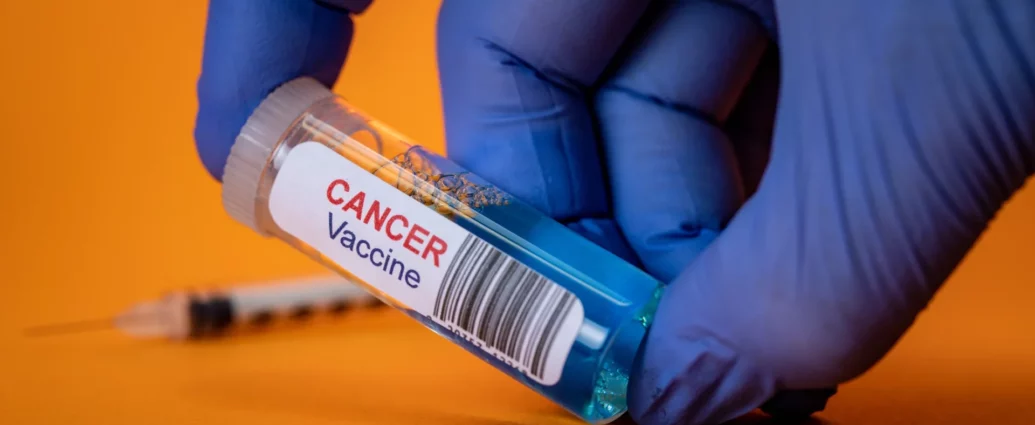Quite a while back, a little gathering of malignant growth researchers meeting at a café in a deconsecrated church medical clinic in Mainz, Germany, drew up a daring arrangement: They would test their original malignant growth immunization against one of the most harmful types of the illness, a disease famous for thundering back even in patients whose cancers had been taken out.
The immunization probably won't shut down those backslides, a portion of the researchers figured. However, patients were frantic. Also, the speed with which the illness, pancreatic malignant growth, frequently repeated could really benefit the researchers: no matter what, they would find out soon whether the antibody made a difference.
On Wednesday, the researchers will report results that challenged the one in a million chances. The immunization incited a resistant reaction in portion of the patients treated, and those individuals showed no backslide of their malignant growth throughout the review, a finding that external specialists depicted as very encouraging.
The review, which will be distributed in Nature, was a milestone in the yearslong development to make malignant growth immunizations custom fitted to the cancers of individual patients.
Notice
Keep perusing the principal story
Analysts at Dedication Sloan Kettering Disease Center in New York, drove by Dr. Vinod Balachandran, extricated patients' growths and transported tests of them to Germany. There, researchers at BioNTech, the organization that made a profoundly effective Coronavirus immunization with Pfizer, examined the hereditary cosmetics of specific proteins on the outer layer of the disease cells.
New Advancements in Disease Exploration
Progress in the field. As of late, progressions in research have had an impact on how disease is dealt with. Here are a few ongoing updates:
Bosom malignant growth. Frightened by an expansion in bosom malignant growth analyze among more youthful ladies and perseveringly high passing rates among People of color, the U.S. Preventive Administrations Team has suggested all ladies start getting normal mammograms at age 40, rather than 50, the past proposal. This is the thing the new rules mean for you.
Ovarian disease. Expanding on proof that ovarian disease most frequently begins in the fallopian tubes, not the ovaries, the Ovarian Malignant growth Exploration Coalition is encouraging even ladies who don't have a hereditarily high gamble for ovarian disease — that is, most ladies — to have their fallopian tubes carefully eliminated assuming that they are done having kids and are arranging a gynecologic activity at any rate.
Disease immunizations. From here onward, indefinitely quite a while, the commitment of malignant growth immunizations that would safeguard solid individuals at high gamble of disease has just hung before scientists. Presently, however, uplifting creature information and primer examinations in human patients are causing a few specialists to feel hopeful.
Rectal malignant growth. A little preliminary that saw 18 rectal malignant growth patients taking a similar medication, dostarlimab, seems to have delivered a surprising outcome: The disease evaporated in each and every member. Specialists accept that this study is the main in history to have accomplished such outcomes.
Utilizing that hereditary information, BioNTech researchers then delivered customized antibodies intended to train every patient's resistant framework to go after the growths. Like BioNTech's Coronavirus shots, the disease immunizations depended on courier RNA. For this situation, the immunizations trained patients' cells to make a portion of similar proteins found on their extracted growths, possibly inciting a safe reaction that would prove to be useful against genuine disease cells.
Dig further into the occasion.
Extraordinary deal: Buy in for $1 every week for the main year.
"This is the principal certifiable achievement — and I will call it a triumph, notwithstanding the primer idea of the review — of a mRNA immunization in pancreatic disease," said Dr. Anirban Maitra, an expert in the illness at the College of Texas MD Anderson Disease Center, who was not engaged with the review. "By that norm, it's an achievement."
The review was little: Just 16 patients, every one of them white, were given the immunization, part of a treatment routine that likewise included chemotherapy and a medication expected to hold growths back from dodging individuals' safe reactions. Furthermore, the review couldn't altogether preclude factors other than the antibody having added to improved results in certain patients.
"It's somewhat early days," said Dr. Patrick Ott of the Dana-Farber Malignant growth Foundation.
Past that, "cost is a significant obstruction for these sorts of immunizations to be all the more extensively used," said Dr. Neeha Zaidi, a pancreatic disease expert at the Johns Hopkins College Institute of Medication. That might actually make abberations in access.
Yet, the straightforward reality that researchers could make, quality-check and convey customized disease immunizations so rapidly — patients started getting the immunizations intravenously approximately nine weeks in the wake of having their growths taken out — was a promising sign, specialists said.
Starting from the start of the review, in December 2019, BioNTech has abbreviated the cycle to under about a month and a half, said Dr. Ugur Sahin, a prime supporter of the organization, who dealt with the review. Ultimately, the organization expects to have the option to make malignant growth antibodies in about a month.
Furthermore, since it initially started testing the immunizations about 10 years prior, BioNTech has brought down the expense from generally $350,000 per portion to under $100,000 via robotizing parts of creation, Dr. Sahin said.
A customized mRNA malignant growth immunization created by Moderna and Merck decreased the gamble of backslide in patients who had a medical procedure for melanoma, a kind of skin disease, the organizations reported a month ago. Yet, the most recent review set the bar higher by focusing on pancreatic malignant growth, which is remembered to have less of the hereditary changes that would make it ready for antibody medicines.
In patients who didn't seem to answer the immunization, the malignant growth would in general return about 13 months after medical procedure. Patients who answered, however, gave no indications of backslide during the approximately year and a half they were followed.
Intriguingly, one patient showed proof of an immunization enacted resistant reaction in the liver after a strange development created there. The development later vanished in imaging tests.
"It's episodic, yet it's decent corroborative information that the immunization can get into these other growth districts," said Dr. Nina Bhardwaj, who concentrates on malignant growth antibodies at the Icahn Institute of Medication at Mount Sinai.
Researchers have battled for quite a long time to make malignant growth immunizations, to a limited extent since they prepared the invulnerable framework on proteins found on cancers and ordinary cells the same.
Fitting antibodies to transformed proteins tracked down just on malignant growth cells, however, possibly incited more grounded invulnerable reactions and opened new roads for treating any disease patient, said Ira Mellman, VP of malignant growth immunology at Genentech, which fostered the pancreatic malignant growth immunization with BioNTech.
"Simply laying out the confirmation of idea that antibodies in malignant growth can really accomplish something later, I don't have the foggiest idea, thirty years of disappointment is presumably not something terrible," Dr. Mellman said. "We'll start with that."


